If you're running an eCommerce store, getting traffic is only half the battle.
The real challenge?
Turning that traffic into paying customers.
That's where eCommerce conversion rate optimization (CRO) comes in. It's the science and strategy behind nudging visitors down the sales funnel, ensuring they don't just browse but buy.
With online shopping more competitive than ever, mastering CRO isn't a luxury—it's a necessity.
The difference between an underperforming site and a sales powerhouse often comes down to how well it's optimized for conversions. From reducing cart abandonment to speeding up checkout, we'll explore the key tactics that can transform your eCommerce performance.
Let's get into it.
What Is eCommerce Conversion Rate Optimization?

Ecommerce conversion rate optimization is the process of improving your website's ability to convert visitors into customers. It's about fine-tuning every aspect of the shopping experience to make purchasing seamless, intuitive, and persuasive.
Key aspects of CRO include:
- Website usability – Ensuring smooth navigation and intuitive layouts.
- Psychological triggers – Using urgency, social proof, and persuasive copy.
- Technical performance – Optimizing page load speeds and mobile responsiveness.
- Checkout experience – Reducing friction to minimize abandoned carts.
A strong CRO strategy increases revenue without requiring additional ad spend. Instead of chasing more traffic, you make the most of the visitors already on your site.
Understanding Conversion Rate Optimization for eCommerce

Before jumping into strategies, let's break down how conversion rates are calculated and what benchmarks to aim for.
How to Calculate Conversion Rate
The formula for ecommerce conversion rate is straightforward:
Conversion Rate = (Total Conversions / Total Visitors) x 100
For example, if your store gets 10,000 visitors per month and 300 make a purchase, your conversion rate is:
(300 / 10,000) x 100 = 3%
Industry Benchmarks for Ecommerce Conversion Rates
Conversion rates vary by industry, traffic source, and device. Here's a look at general benchmarks:
|
Industry |
Average Conversion Rate |
|
Fashion and apparel |
2.5% - 3.5% |
|
Electronics |
1.5% - 2.5% |
|
Beauty and cosmetics |
3.0% - 4.0% |
|
Home and furniture |
2.0% - 3.0% |
|
Luxury goods |
1.0% - 1.5% |
While these numbers provide a general guideline, the goal should always be continuous improvement. A few percentage points increase can mean thousands—or even millions—of dollars in extra revenue.
Common Challenges in eCommerce Conversion Rate Optimization

Even the most well-designed eCommerce stores face obstacles when it comes to conversion rates.
Here are some of the biggest challenges businesses encounter:
High Cart Abandonment Rates
Studies show that the average ecommerce cart abandonment rate hovers around 70%. This means seven out of ten shoppers leave without completing their purchase. Causes include unexpected shipping costs, complicated checkout processes, and lack of payment options.
Slow Page Load Times
Website speed is a major factor in CRO. Research shows that even a one-second delay in page load time can reduce conversions by up to 7%. Customers expect fast, seamless experiences and slow sites lead to frustration and lost sales. That’s why it’s essential to use reliable hosting to ensure fast load times and higher conversions. The good news is, it doesn’t have to be costly because Cybernews reviews reliable but cheap web hosting options that deliver great performance without the high price tag.
Poor Mobile Optimization
With mobile commerce on the rise, a website that isn't mobile-friendly will lose customers. Slow-loading images, difficult navigation, and unresponsive checkout pages drive mobile shoppers away.
Lack of Personalization
Generic shopping experiences don't work anymore. Consumers expect tailored recommendations, dynamic pricing, and targeted offers based on their behavior. Implementing personalization techniques can significantly increase conversions.
Insufficient Product Information
If your product descriptions are vague, lack high-quality images, or don't provide clear benefits, customers may hesitate to buy. Detailed, high-quality product pages with multiple images, videos, and customer reviews can significantly impact purchasing decisions.
Strategies for Effective Conversion Rate Optimization in eCommerce

High Cart Abandonment Rates
One of the most frustrating challenges for eCommerce stores is dealing with high cart abandonment rates.
Often pushing customers to abandon their carts at the last minute has issues, such as:
- Hidden shipping costs
- Complicated checkout steps
- Unexpected fees
While it's common for online shoppers to add items to their cart without completing the purchase, a high abandonment rate can be a clear sign that something's off with the checkout process. Addressing these issues—by simplifying the checkout process, offering transparent pricing, and providing multiple payment methods—can significantly boost your conversion rates.
Slow Page Load Times
Today's shoppers expect quick, seamless browsing experiences.
If your website takes more than a few seconds to load, potential customers are likely to bounce before even seeing your products. Slow load times can be caused by heavy images, bloated code, or poor server performance, all of which can hurt your chances of converting visitors into buyers.
Optimizing page load speed is essential not only for improving user experience but also for SEO rankings. Tools like Google PageSpeed Insights can help identify and resolve issues that are slowing down your website.
Poor Mobile Optimization
With more people shopping on mobile devices, poor mobile optimization is a significant barrier to conversions.
A site that isn't mobile-friendly can make it difficult for customers to navigate, browse products, or complete a purchase. Elements like small buttons, slow load times, and cumbersome checkout forms can lead to frustration and lost sales.
Ensuring your website is fully responsive and offers an intuitive mobile experience is crucial for keeping customers engaged and increasing conversions across devices.
Lack of Personalization
In the age of AI and data analytics, customers expect personalized shopping experiences. A generic, one-size-fits-all approach can make visitors feel like your store isn't tailored to their needs. Without personalization—such as product recommendations based on browsing history, customized offers, or personalized emails—you might miss opportunities to engage customers and drive them to convert. Implementing AI-powered personalization tools can help make product suggestions, tailor promotions, and create a more relevant shopping experience, leading to higher conversion rates.
Insufficient Product Information
When shopping online, customers can't touch or try products, so they rely heavily on the information you provide. Insufficient or poorly presented product details can leave customers with unanswered questions, making them hesitant to purchase. Product descriptions should be clear, detailed, and informative, covering key features, specifications, and any benefits. High-quality images, 360-degree views, and even videos can help give customers a better sense of the product. Additionally, reviews and ratings from other customers can play a pivotal role in building trust and convincing potential buyers to complete their purchase.
eCommerce Checkout Conversion Rate Optimization Tips

In the fast-paced world of eCommerce, every second counts.
You've worked hard to attract visitors to your site, and now it's time to turn them into paying customers.
But here's the catch: many of them will abandon their cart at the checkout stage. It's frustrating, but it's not an unsolvable problem. Optimizing your checkout process is one of the most effective ways to increase conversions and maximize sales.
Simplify the Checkout Process
A complicated, multi-step checkout process is one of the main reasons customers abandon their purchases.
Streamlining the checkout flow to be as simple and intuitive as possible can significantly reduce friction and encourage conversions. Consider eliminating unnecessary steps, such as forcing users to create an account or providing too many options at once.
The fewer the distractions and obstacles, the faster and easier it will be for your customers to complete their purchase. Aim for a one-page checkout or a simple, step-by-step process with clear navigation.
Enable Guest Checkout
While account creation can be beneficial for long-term customer engagement, forcing customers to create an account before completing a purchase is a major deterrent.
Many shoppers prefer the convenience of a guest checkout, especially if they're making a one-off purchase. Allowing guest checkout helps speed up the process and reduces friction.
You can still offer the option to create an account after the purchase, giving customers the flexibility to choose how they engage with your store.
Offer Multiple Payment Options
Shoppers have different preferences when it comes to payment methods, and offering multiple options increases the likelihood that customers will find one that suits them.
Include traditional options like credit and debit cards, but also offer alternative payment methods such as:
- PayPal
- Apple Pay
- Google Pay
- Klarna
- Afterpay
The more choices you provide, the more likely it is that customers will complete their transaction.
Ensure Mobile-Friendliness
With mobile commerce on the rise, having a checkout process that is fully optimized for mobile devices is non-negotiable. Your checkout pages should load quickly, have easily tappable buttons, and provide a seamless experience across different screen sizes.
Mobile shoppers are often on the go, so it's crucial to ensure that the process is as smooth and frustration-free as possible. A mobile-optimized checkout will not only improve conversion rates but also enhance your customers' overall shopping experience.
Use Progress Indicators
Providing clear progress indicators during the checkout process helps reduce anxiety and set expectations for customers. Showing them how many steps are left in the checkout process can reassure them that the end is near.
This visual cue helps customers stay focused and motivated to finish the purchase. Whether it's a simple progress bar or numbered steps, it keeps them informed about how far along they are, reducing the chances of abandonment.
Auto-Fill Forms
Manual data entry is one of the most tedious parts of online shopping. Auto-filling forms based on the user's saved information or location can speed up the checkout process and make it more convenient.
Leveraging browser or payment processor integrations, such as autofill tools can:
- Save users time
- Reduce errors
- Improve the chances of completing a purchase
Ensure that auto-fill is available for fields like shipping addresses, payment information, and billing details to streamline the process.
Provide Clear Error Messages

Nothing is more frustrating for customers than submitting their payment details or shipping address only to be met with an unclear error message.
When something goes wrong during the checkout process, ensure that the error messages are easy to understand and offer clear guidance on how to correct the issue. Whether it's a misspelled address or an invalid credit card number, users should know exactly what to fix without having to guess or backtrack.
This transparency can help resolve issues quickly and keep customers moving forward in the process.
Display Total Costs Upfront
Unexpected costs are one of the leading causes of cart abandonment.
They may abandon the cart out of frustration when customers get to the checkout page only to discover additional charges, such as:
- Shipping fees
- Taxes
- Handling charges
To avoid this, display the total cost upfront, including any shipping or tax details, as early as possible in the buying process. Transparency about pricing helps build trust and gives customers a clear idea of what they'll pay, reducing surprise costs that could lead to cart abandonment.
Add Trust Signals
In the digital shopping world, trust is everything.
Without the ability to physically inspect products or interact with store staff, customers need assurance that your website is secure and reliable.
Incorporating trust signals like SSL certificates, secure payment badges, customer reviews, and clear return policies can help customers feel safe making a purchase. Encouraging strong passwords during account creation and offering secure login options can also reinforce trust and protect user data. Trust symbols reassure shoppers that their personal and financial information is protected, which increases the likelihood of a successful transaction.
Use Exit-Intent Popups
Exit-intent popups can be a highly effective tool to recover abandoning visitors.
When a customer moves their mouse toward the browser's exit button, triggering a well-timed popup can catch their attention and offer a last-ditch incentive to complete the purchase.
This could be a:
- Discount
- Free shipping
- Reminder of their cart contents
Be careful not to overdo it, but a strategically placed exit-intent popup can encourage customers to reconsider and finalize their purchase.
Enable Save Cart Features
Sometimes, shoppers get distracted or need more time to make a decision, but that doesn't mean they've abandoned their intent to buy.
Offering a save cart feature allows customers to store their cart for later and come back to it when they're ready to complete the purchase. This is especially useful for customers who are browsing across multiple devices or want to revisit their cart after a break.
It gives them the option to resume shopping without the need to start over, improving conversion opportunities.
Optimize Page Load Speed
A slow-loading checkout page can be the ultimate deal-breaker for customers, especially when they're on the verge of completing a purchase.
To ensure your checkout process loads as quickly as possible, Delays of even a few seconds can lead to:
- Delayed compressed large images
- Minimized code
- Failed leverage caching and CDNs
A fast, responsive checkout not only improves user experience but can also enhance your SEO ranking and mobile performance.
Provide Clear Call-to-Actions (CTAs)
Throughout the checkout process, customers need clear guidance on the next steps.
Having prominent, easy-to-understand call-to-action (CTA) buttons is critical. Whether it's "Continue to Payment," "Apply Coupon," or "Complete Purchase," your CTAs should be visible, action-oriented, and strategically placed to lead customers to the next step.
Use contrasting colours to make these buttons stand out and ensure they're easily tappable on mobile devices. A well-designed CTA encourages customers to move forward with their purchases confidently.
Test and Optimize Regularly
Conversion rate optimization isn't a one-and-done task—it's an ongoing process.
Regularly testing different elements of your checkout process through:
- A/B testing
- Heatmaps
- User surveys that help you identify areas for improvement
Small changes, such as adjusting button placement, changing form labels, or simplifying language, can make a big impact on conversions. Continuously optimizing your checkout process based on real data ensures that you're always improving the user experience and reducing abandonment rates.
How to Improve eCommerce Conversion Rate Optimization

Improving your eCommerce conversion rate is essential for driving revenue and sustaining long-term growth.
To achieve this, it's important to adopt a comprehensive strategy that combines:
- Expert guidance
- Advanced technological tools
- Continuous learning and iteration
In the sections below, we expand on three key areas: partnering with agencies, utilizing the right tools, and tapping into valuable resources.
Agencies
Partnering with specialized agencies can be a mind-blowing thing for your eCommerce business.
These agencies bring a wealth of industry experience and strategic insights that can help you identify weaknesses in your conversion funnel. They offer a range of services—from refining your website's user experience to creating targeted marketing campaigns—that are tailored to your unique business needs.
By leveraging the expertise of these professionals, you can implement data-driven strategies that not only boost conversion rates but also enhance customer satisfaction. Agencies can help you perform in-depth audits, competitive analyses, and usability testing to ensure that every element of your online store is optimized for maximum impact.
Tools
Utilizing advanced tools is another critical component of conversion rate optimization.
Modern analytics software, heatmaps, and A/B testing platforms enable you to gain detailed insights into customer behaviour on your site. These tools help you understand which pages and elements are performing well and which areas need improvement.
For example, heatmaps can visually represent user interactions, allowing you to see where visitors click, scroll, or drop off. A/B testing enables you to experiment with different versions of landing pages, call-to-action buttons, and checkout flows to determine what resonates best with your audience.
By integrating these tools into your optimization strategy, you ensure that every decision is backed by reliable data, ultimately leading to a more effective and engaging user experience.
Resources
Finally, staying informed through a variety of resources is vital for continuous improvement.
The digital landscape is constantly evolving, and keeping up with the latest trends, best practices, and case studies can provide you with fresh ideas and innovative strategies. Resources such as industry blogs, webinars, eBooks, and online communities offer valuable insights into successful conversion rate optimization tactics.
These materials not only highlight emerging technologies and methodologies but also provide practical tips from experts who have successfully navigated similar challenges. By regularly engaging with these educational resources, you can stay ahead of the competition and ensure that your eCommerce site remains optimized for both current and future customer expectations.
FAQ
Understanding the intricacies of eCommerce conversion rate optimization is essential for unlocking your online store's full potential.
Here are some frequently asked questions and answers to help clarify key concepts:
What Is eCommerce Conversion Rate Optimization?
It's the systematic process of enhancing your online store to increase the percentage of visitors who complete a desired action—such as making a purchase—by addressing user experience issues and optimizing the entire sales funnel.
How Do Agencies Contribute to Improved Conversion Rates?
Specialized agencies bring industry expertise and data-driven strategies. They conduct detailed audits, usability tests, and competitive analyses, helping you identify and fix bottlenecks in your conversion funnel.
Which Tools are Most Effective for Conversion Rate Optimization?
Key tools include analytics platforms, heatmaps, and A/B testing software. These tools provide insights into user behaviour and allow you to experiment with and refine site elements for better performance.
How Frequently Should I Review and Optimize My eCommerce Site?
Regular reviews are essential. Continuous testing and periodic updates—at least quarterly—can help ensure that your strategies remain effective and your website adapts to evolving customer behaviours.
eCommerce Conversion Rate Optimization Done Right
Improving your eCommerce conversion rate is a multifaceted endeavour that requires a strategic blend of expert guidance, advanced tools, and continuous learning.
By partnering with specialized agencies such as Roketto, leveraging powerful analytics and testing tools, and staying updated with the latest industry insights, you can build a robust framework for success. This comprehensive approach not only streamlines the customer journey but also drives sustainable business growth.
Ready to take your eCommerce conversions to the next level?
Contact Roketto today to discover how our expert team can tailor a strategy that meets your unique needs and maximizes your online sales.
Reach out now and start transforming your eCommerce experience!

Garreth Aspeling
Garreth has 6 years of experience crafting compelling SEO-based blog posts and articles for various audiences. From cryptocurrency to SaaS and everything in between, Garreth always creates high-quality content for his clients. He is also engrossed in books, hiking trails, and spending time with loved ones.











2.png)
2.png)









